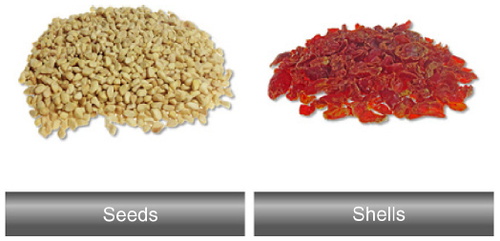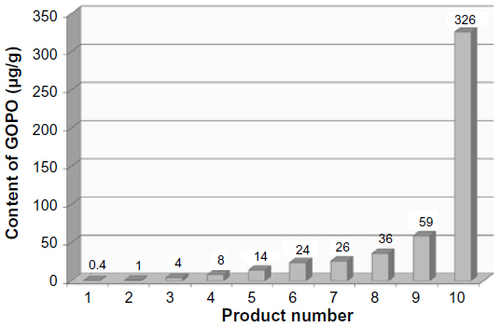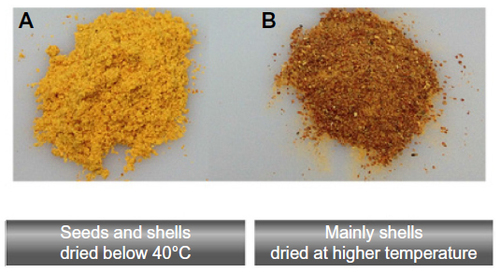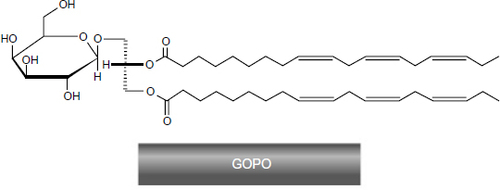Figures & data
Figure 1 The ripe pseudo fruits, “rose hips”, of Rosa canina. Rose hips are the aggregate fruits of rose plants, composed of enlarged, fleshy, red floral cups, enclosing multiple dry fruitlets (the thin membranes surrounding the individual seeds).

Figure 2 Simplified botanical anatomy of a rose hip, showing its major components.

Table 1 Documented historical therapeutic uses for Rosa canina
Figure 3 Separated seeds and shells from the hips of Rosa canina.

Table 2 A variety of known compounds of Rosa canina with bioactive properties
Table 3 The function of vitamins and deficiency-related diseases
Table 4 Different flavonoids present in Rosa canina
Figure 5 The content of the galactolipid GOPO in different commercially available rose hip products.
Abbreviation: GOPO, (2S)-1,2-di-O-[(9Z,12Z,15Z)-octadeca-9-12-15-trienoyl]-3-O-β-d-galactopyranosyl glycerol.

Figure 6 Rose hip powders with different constituents and drying temperatures.

Figure 7 The molecular structure of the galactolipid GOPO.


